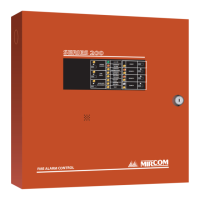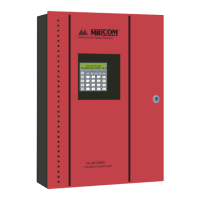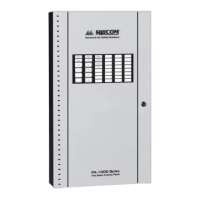Indicators, Controls, & Operation
26
Initiating (Detection) Circuit Types
Circuit Type Description
Non-Verified Alarm
This is a "normal" type of alarm which may have pull stations, smoke detectors, or heat
detectors attached. Any activation of these devices will immediately result in an alarm condition
in the fire alarm control panel. An alarm condition causes the associated circuit Status LED and
the Common Alarm LED to illuminate red.
Verified Alarm
These alarms are verified by a reset and timing procedure, and may have pull stations, smoke
detectors, or heat detectors attached. Any activation of pull stations or heat detectors will result
in an alarm condition in the fire alarm control panel within four seconds. Smoke detectors will
be verified for a real alarm within 60 seconds depending upon the startup time of the smoke
detectors being used. If four seconds is too long a response time for pull stations, then they
should be wired separately on a non-verified alarm circuit. An alarm condition causes the
associated circuit Status LED and the Common Alarm LED to illuminate red.
Water-Flow Alarm
An alarm for water-flow sensors. These alarms are identical to normal non-verified alarms
except that any indicating circuits programmed to these circuits (all are by default) are non-
silenceable. Also, if water-flow retard operation is enabled, then these circuits are sampled
every one second; if ten samples are active within any 15 second interval, the water-flow alarm
is confirmed and processed. An alarm condition causes the associated circuit Status LED and
the Common Alarm LED to illuminate red. Note: Do not use the retard operation with any
external retarding device; maximum retard may not exceed 120 seconds.
Non-Latching
Supervisory
These alarms are for supervisory devices. An activation on these circuits will cause the Circuit
Status LED and the Common Supervisory LED to illuminate amber. The buzzer will sound
continuously. If the circuit activation is removed, the supervisory condition will clear (so long as
there are no other supervisory conditions in the system) and the circuit Status LED will
extinguish.
Latching
Supervisory
These alarms are for supervisory devices. An activation on these circuits will cause the Circuit
Status LED and the Common Supervisory LED to illuminate amber. The buzzer will sound
continuously. If the circuit activation is removed, the Supervisory condition will not clear.

